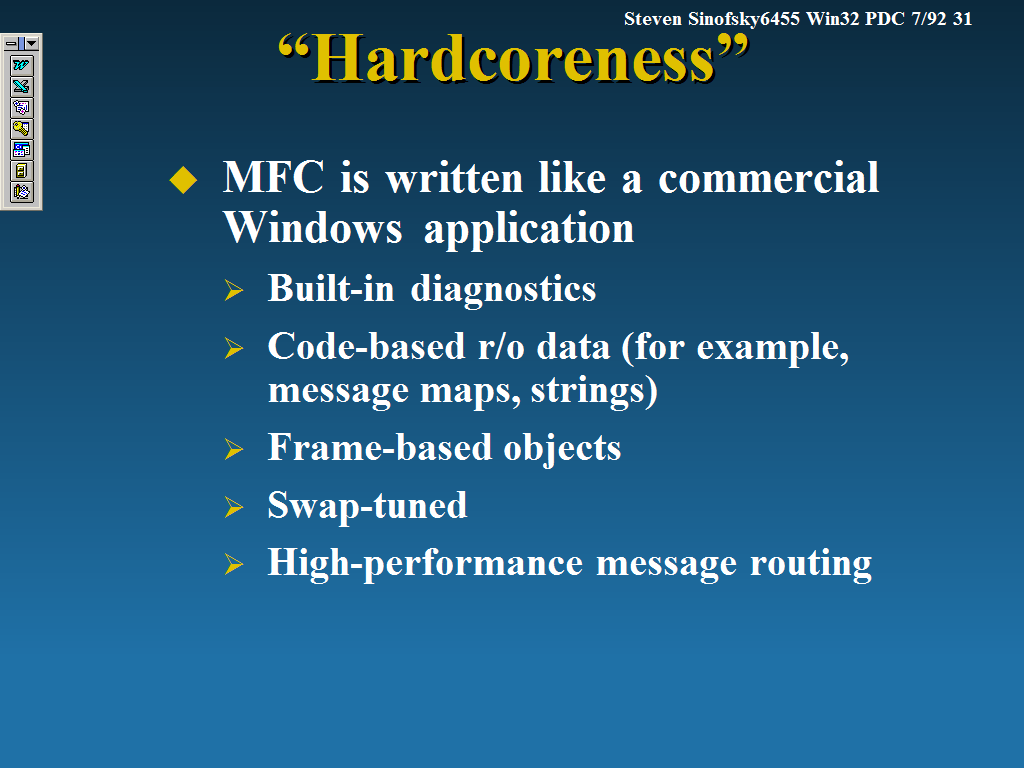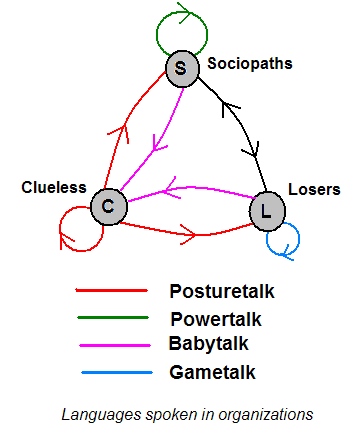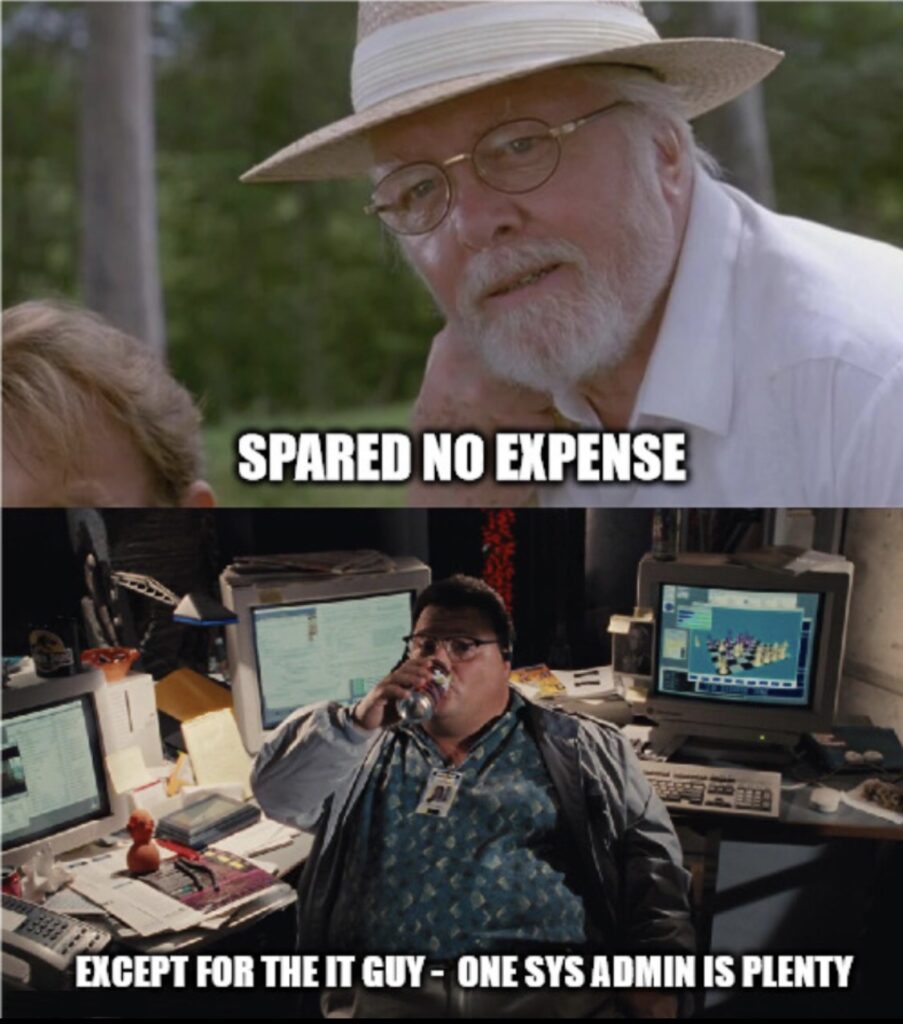
“Who are you and why are you here?” –Dave Cutler (DaveC)
Source: 012. I Shipped, Therefore I Am
Steven Sinofsky, once a huge wheel at Microsoft, for a very long time, is writing a series of articles chronicling the halcyon days of the early PC business at Substack. I can’t quite bring myself to subscribe, because most of it is free already. Plus, there aren’t many surprises for me, since I was living it during that time.
When Windows NT was introduced, I was quick to jump on board. I was already experimenting with Linux towards the end of ’94. But then I saw a disc of NT 3.5 (not even 3.51 yet) on someone’s bookshelf. He said he wasn’t using it, so I snapped it up and installed it. For the next 20 years, I would dual boot my PC’s between Windows NT and Linux. I only used Windows for gaming, but for that use, it was obstinate. I tried every incarnation of Wine and Crossover and PlayOnLinux and everything else. Nothing ever let me run Windows games on Linux well enough to warrant getting rid of a native partition.
The content of the slide above is of no consequence, as is pretty much the case with all presentation slides. What’s interesting to me is the little toolbar on the top, left side. It’s from the early Office XP days, back when Microsoft was new and cool. “Before the dark times. Before the empire.” Seeing it evoked a visceral response. As a computer nerd, those really were interesting and exciting times to live through. From the article, that screencap is from 1992. Competing against giants like IBM, HP, and Sun, Microsoft’s eventual dominance was anything but sure at that time. And that’s what’s prompted me to write this anecdote.
In 1995, my Fortune 250 company didn’t even have an internet connection yet. I was using a phone line, and a modem that I conned my boss into letting me get. It was over this modem that I downloaded all 54 floppy drive images of Slackware Linux, on a computer running Windows 3.11 with Trumpet Winsock, connecting to a free SLIP dialup bank in California.
At first, I was much more into NT than Linux. I skipped Windows 95 entirely. I don’t think I ever had a computer that ran it.
I remember how easy it was to setup a dialup connection in NT. By 1996, I was running a dual Pentium Pro with 384 MB of RAM, SCSI hard drives, and a $2,500 video card to do FEA work. The total cost was about $10,000. A coworker got a SGI Indy to do the same sort of work, to the tune of $80,000. The company still didn’t have an internet connection, so he also got an external modem, and hired a local ISP to come set it up. The guy came and screwed around with the connection for 4 hours. I kind of razzed him, by pointing out that it took me all of 15 minutes to configure the same thing on NT. That’s how smug I was about NT versus Unix at the time.
The best part was still to come.
For the next week, the ISP guy still couldn’t get that Indy on the internet. Every time it would connect, the kernel would segfault, and the machine would crash.
But that’s not the best part.
The ISP guy worked with SGI to patch IRIX to fix the modem driver, and finally got it working. My coworker left it connected to the internet all the time to get his email. Things worked fine for a few weeks.
Then the company got a T1 internet connection, and then connected our facility to the main office via a SONET ring. I was really looking forward to not needing my dialup connection any more. But, the first morning, no one could access the internet. Complaints were made. Investigations were performed. Our internal IT would fix the problem, and the next day, it would come back.
Here comes the best part.
Finally, someone realized that computers inside our facility were getting the wrong gateway address to get to the internet. They realized that they were picking up the IP address of my workmate’s Indy, which was advertising itself as a route to the internet, and since the number of hops from computers in the office to the Indy were less than skipping over to the central office, they were preferring its modem, and the Indy’s phone line would choke from the load.
I recall very clearly that there was a simple checkbox in the dialog for setting up a dialup connection in Windows NT for advertising the connection to the LAN as a route to wherever you were connecting. It was on by default, but when I was running through the process, I quickly realized that this was NOT what I wanted, and un-ticked it.
And I felt pretty smug about being serious about NT at the time.
I stuck with NT as my primary interest until some time around 1998 or so. Then Nat Friedman and Miguel de Icaza released Ximian Desktop for Linux, which made Linux on the desktop really pleasant to use. I wasn’t doing analysis work any more. I had transferred to become the system admin of all the Unix machines in the advanced engineering group, so running Linux was a perfect fit. After that, it was pretty much all Linux, all the time, until switching to Macs just a few years ago.



